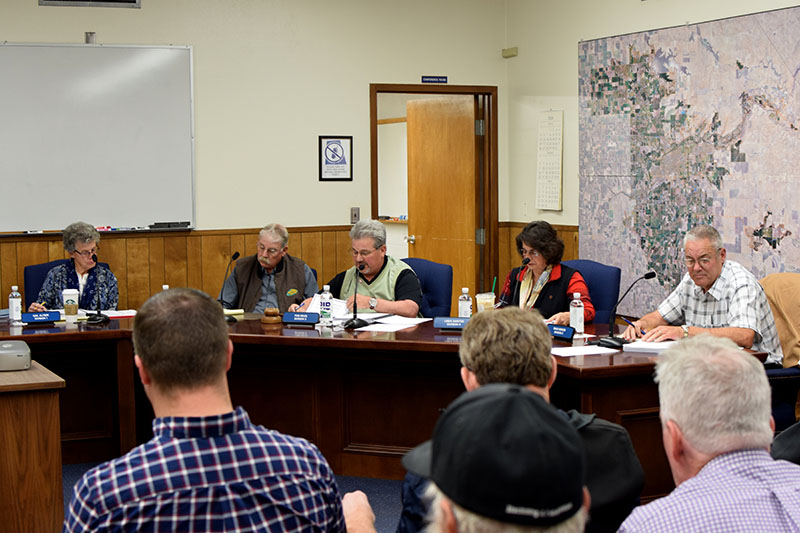
Water in California has always presented unique challenges. Along with these challenges come opportunities for those with enough leadership, vision, courage and determination to conquer them. Our forefathers recognized this reality and helped create a fertile paradise, the world’s bread basket, when they rose to the challenge of harnessing and managing water in a way that protected the environment and developed irrigated agriculture in California’s Great Valley. Today, our water leaders have much the same opportunity to increase and build upon our forefathers’ visionary leadership and expand our water resources for the good of the entire region while enhancing the environment, protecting groundwater, and increasing storage.
Just recently, a significant and challenging ruling from California’s appellate court has altered our water landscape. With this ruling, however, a great opportunity exists for those water leaders and irrigation districts willing to rise to the challenge. The courts in Stanford Vina Irrigation Co. v. State of California (Stanford Vina) affirmed the State Water Resource Control Board has broad authority in an emergency drought situation to regulate all water rights, including riparian and pre-1914 water rights, if those rights are deemed to be an unreasonable use of water through severe drought emergency regulations. The California Supreme Court has refused to consider this decision, so we must all adjust our thinking to account for the case’s impacts on California’s water landscape without over-reacting to the opinion. We should turn this challenging opinion into an opportunity that allows our irrigation districts to continue managing water resources to ensure a strong, viable future.
It is unclear whether this decision even applies in wet, normal or even dry water years or outside the context of an existing state of emergency due to drought conditions because it was issued during a state of emergency created by the worst drought in California’s recorded history. Even under Stanford Vina’s reasoning, surface water being put toward a direct beneficial use would not be threatened. Clearly specifying and then demonstrating water is being transferred or sold for the purpose of replenishing groundwater or otherwise assisting in compliance with the Sustainable Groundwater Management Act and then utilizing our groundwater resources as, perhaps, our most immediate and secure storage option for surface water would be an effective, legally defensible way to conduct water transfers and sales. Such an approach turns the challenges of Stanford Vina and meeting the Sustainable Groundwater Management Act’s objectives into rewarding opportunities.
Areas within Stanislaus County have a real need — some might even argue an emergency situation — concerning groundwater. In some areas, groundwater tables have dropped as much as 90 feet from optimum levels. Less impacted areas are still down 55 feet from only a few years ago.
The good news is history shows these groundwater resources rapidly rebound if they are replenished. The Sustainable Groundwater Management Act requires and the recent court decision provides a means to replenish and effectively manage our groundwater resources. Our local irrigation districts can transfer and sell surface water within their spheres of influence and groundwater basins to farmers and industries that are currently primarily reliant on groundwater. Ensuring that transfers and sales are tied to groundwater replenishment and occur within the respective irrigation district’s groundwater basin would add another layer of assurance and benefit to both the district and the entire community and increase storage capacity.

Both the Merced and Modesto Irrigation Districts have already exhibited innovation and true leadership by rising to this challenge and creating an opportunity. This year the Merced Irrigation District adopted a ten-year groundwater replenishment program. Modesto Irrigation District won an award for its annual Groundwater Replenishment Program.
Last Tuesday, the Oakdale Irrigation District board turned in the opposite direction. Focusing on the challenges presented by Stanford Vina, a majority of the board’s leaders refused to pursue its five-year groundwater replenishment plan introduced this past summer and refunded participating farmers’ deposits.
This spring, the District had declared up to one hundred thousand acre-feet of water “surplus” in order to sell the water to south of Delta water users. However, that sale has been stopped by California’s Fish and Wildlife Service. Without its program, the District is left with two options, sell the water outside the valley or abandon it. Either way, up to one hundred thousand acre-feet of water is gone from the valley forever.
During challenging times, true leaders emerge and turn those challenges into opportunities. This valley is living in such a time. Leaders at the Modesto and Merced Irrigation Districts have already exhibited foresight and determination and have seized upon our current-day water challenges and created opportunities benefiting the districts, residents, and environment. Indeed, they’ve benefitted the entire region.
Stanislaus County ‘s Water Advisory Committee, our numerous groundwater sustainability agencies, the Farm Bureau and other community groups should take every opportunity to encourage and support our water leaders and irrigation districts by calling on them to create long-term, steady groundwater replenishment programs in every irrigation district. Such actions not only meet the challenges of Stanford Vina, they also put water to an immediate beneficial use, assist in achieving the goals and objectives of the Sustainable Groundwater Management Act, provide increased storage, cash flow and flexibility to the districts, improve the environment, and help ensure the very survival of the Valley — the ultimate win-win-win.
Ronda Lucas is a local attorney specializing in water law for nearly twenty years. She is the principal partner of Lucas Law and can be contacted at [email protected].

Sustainable Groundwater starts with crops that will grown on 12 inch’s of water
a year matching the valley rainfall.
If the cash crop for export takes 36 inch’s of water a year to grow
you will be TAKENING water from others or the needs of the future.
Grp is an excellent program. It works well for Oid because of their use or lose it water rights.
It is suspicious though that Mid’s largest advocate for this program is one of its biggest benefactors and continues to advocate for it even in capped years against district recommendation.
Your relying on election propaganda. Byrd advocated for FULL allocations to district growers along with the program and never applied for program water. What’s suspicious is the motivation of the lobbyists spreading false facts.
Sad how propaganda keeps Valley Citizens from knowing accurate facts: pro, con, or neutral.
I for one, hoping to speak for others, would APPRECIATE hearing from others to obtain a broader idea of WHATS REALLY GOING ON…
Any takers? Rebuttals? Views On Issues Concerning Everyone?
Tell us Valley Citizens more about this benefactor, please.
Don’t leave us hanging, please.
There are sooooo many issues to dig into that we cannot keep up.
Help us out, please.